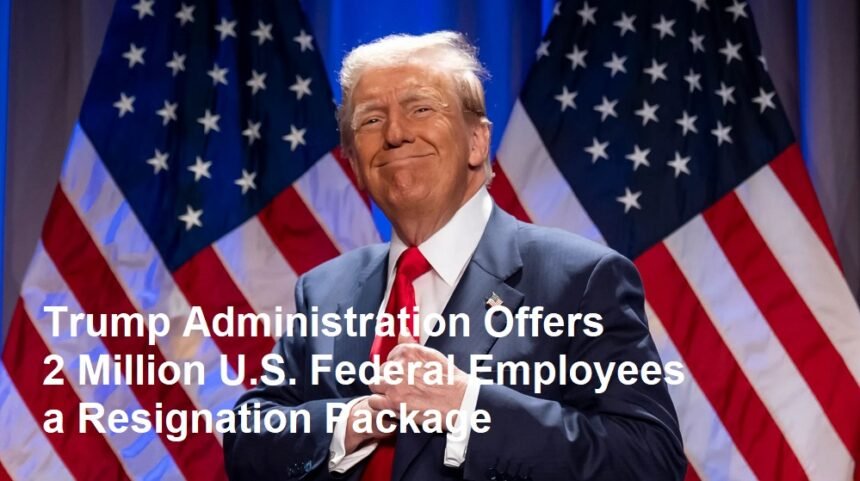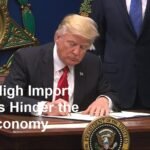In a bold and controversial move, the administration of former U.S. President Donald Trump has put forward a massive voluntary resignation package for 2 million federal employees. The initiative, aimed at downsizing the government workforce, is projected to save the U.S. government $100 trillion (Rp 1.6 quadrillion) in long-term expenses.
The proposal, which has sparked heated debate among policymakers, economists, and labor unions, is part of a broader effort to reduce federal spending and streamline government operations. While some see it as a necessary step toward fiscal responsibility, others argue it could destabilize key public services and hurt federal workers.
According to reports, the plan involves voluntary early retirement incentives, severance packages, and buyout offers for government employees in various departments. The goal is to reduce the size of the federal workforce significantly, particularly in non-essential sectors.
Key details of the proposal include:
- Early retirement incentives for employees aged 50 and above with at least 20 years of service.
- One-time severance payments based on tenure and salary levels.
- Extended healthcare benefits for those opting to resign.
- Job transition assistance for employees seeking new careers in the private sector.
The Trump administration believes that eliminating excessive government jobs would cut bureaucratic inefficiencies and allow the economy to shift towards private-sector-led growth.
The administration claims that reducing federal employment costs, pension obligations, and healthcare liabilities could lead to an estimated $100 trillion in savings over several decades.
Economists, however, are divided on the accuracy of this projection. Some argue that while cutting federal payrolls can result in short-term savings, the long-term economic impact—such as the potential decline in consumer spending and job market instability—must be carefully considered.
Mark Zandi, chief economist at Moody’s Analytics, expressed skepticism:
“The numbers seem highly exaggerated. While reducing the federal workforce can provide savings, a figure as large as $100 trillion is ambitious and unlikely.”
On the other hand, supporters of the plan, including conservative think tanks, argue that reducing bureaucracy and shifting responsibilities to private enterprises will lead to greater economic efficiency.
The proposal has ignited a fierce debate in Congress, with Republicans largely supporting the initiative and Democrats strongly opposing it.
- Republican Senator Ted Cruz praised the move, stating:
“This is a necessary step to shrink government bloat and empower private businesses.”
- Democratic Senator Elizabeth Warren condemned the plan, calling it “an attack on hardworking federal employees” and warning that it could harm essential government services.
Public sector unions, including the American Federation of Government Employees (AFGE), have vowed to fight against mass buyouts, arguing that this move could weaken federal agencies responsible for national security, healthcare, and infrastructure.
AFGE President Everett Kelley said:
“This is not about saving money. It’s about dismantling the government workforce and hurting public servants who have dedicated their lives to serving the American people.”
A reduction of 2 million government employees would significantly affect federal operations, including:
- Social Security and Medicare – Reduced staffing could delay benefits processing for millions of retirees and disabled citizens.
- Public Health Services – Agencies like the CDC and FDA could experience staff shortages, impacting public health programs.
- National Security – The Department of Defense and Homeland Security might face reduced workforce capacity, affecting national security operations.
- IRS and Tax Collection – Fewer employees in the Internal Revenue Service (IRS) could delay tax processing and refunds.
- Infrastructure and Disaster Response – Federal agencies involved in natural disaster relief and infrastructure projects could be slowed down.
Analysts warn that these disruptions could outweigh the projected cost savings, leading to higher economic costs in the long run.
While the proposal is still in its early stages, it has already triggered nationwide discussions about government spending, job security, and economic strategy. If implemented, it would mark one of the most significant workforce reductions in U.S. history.
However, legal challenges and union resistance are expected to slow down or even halt the implementation of the plan. As the debate continues, the fate of millions of federal employees remains uncertain.
With the 2024 presidential elections approaching, the proposal has also become a key political issue, influencing voter sentiment on government efficiency and economic priorities.
The Trump administration’s proposal to offer voluntary resignation packages to 2 million federal employees presents a high-stakes policy shift that could reshape the future of the U.S. government workforce. While it promises massive savings, it also raises serious concerns about its economic and social consequences.
Whether this initiative moves forward or faces strong opposition, it has undoubtedly sparked a major national conversation about the size, role, and efficiency of the federal government in modern America.












